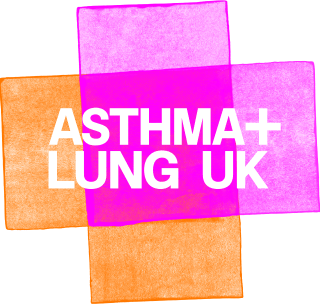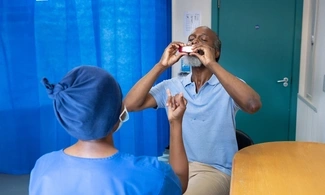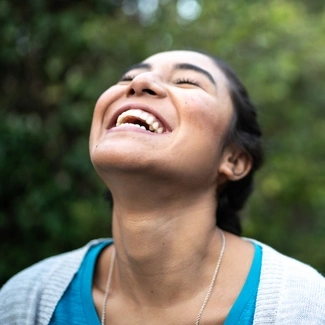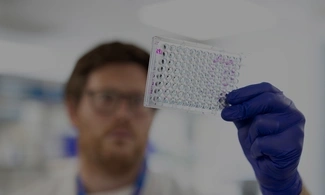What is passive smoking?
Passive smoking, sometimes also called second-hand smoking, is when you breathe in the smoke from someone else’s cigarette, cigar or pipe.
Research shows that tobacco smoke can harm your lungs because it contains lots of dangerous chemicals, including tar and carbon monoxide.
Passive smoking can affect your child’s lungs even if you do not smoke near them. This is because even if you smoke inside with an open window, the smoke can stay in the air for hours after smoking.
Smoke can stay in materials like carpets, blankets and toys before being released back into the air over time. This is called third-hand smoke. This means that even if you smoke outside, the harmful chemicals in smoke can still stay on your clothes.
If you smoke, one of the best things you can do for your child’s and your own lung health is to quit.
How does passive smoking affect my child?
Babies and children are more likely to be harmed by passive smoking. They’re more likely to breathe in tobacco smoke because they breathe faster than adults. They’re also more likely to breathe through their mouths, so the air is not filtered by their nose.
Because children’s lungs are still growing, breathing in tobacco smoke is especially harmful.
When they’re exposed to tobacco smoke, babies and children are more at risk of:
- developing asthma and having more severe asthma attacks
- developing lung infections, like bronchitis and pneumonia
- coughing and noisy chest sounds, like wheezing
- sudden infant death syndrome (SIDS)
- developing other infections, like ear infections and meningitis
- their lungs not working as well when they grow up.
Smoking around your child can also affect their wellbeing and general health. Children are more likely to smoke when they’re older if their parents smoke.
Is it safe to vape around my child?
The NHS says that it’s best to avoid vaping around children if you can.
This is because research about vaping is happening now, so we’re not yet sure about the long-term impacts of vaping around children. We also do not know if vaping around children means that they’re more likely to vape or smoke when they’re older.
Vaping can help some people quit smoking. If vaping is the most helpful way for you to stop smoking, it’s likely to be safer for you and your child than continuing to smoke cigarettes.
At the moment, experts believe that the vapour from e-cigarettes or vapes is not as harmful as tobacco smoke. This is because it does not contain tar or carbon monoxide, which are the most harmful chemicals in cigarette smoke. The vapour might contain some dangerous chemicals, but at much lower levels.
Smoking during pregnancy
Smoking or breathing in passive smoke when you’re pregnant can mean that dangerous chemicals are passed on to your baby in the womb.
This can cause serious harm to your baby, including:
- stopping their lungs from growing properly. This means their lungs will not work well and they’re more likely to get lung infections after they’re born.
- increasing the risk that they’re born prematurely or with a low birth weight. This can make them more likely to develop a lung condition later in life.
- reducing the amount of oxygen and food they get in the womb, which forces their heart to work harder.
Stopping smoking and avoiding breathing in tobacco smoke when you’re pregnant can reduce the chance of a miscarriage and still birth.
The NHS has more information about pregnancy and smoking.
Is it safe to vape while pregnant?
Vaping is thought to be less harmful than smoking cigarettes but there’s not a lot of research about vaping during pregnancy. Healthcare professionals usually advise people to use nicotine replacement therapy (NRT) during pregnancy instead of vaping.
We have more information about how to stop smoking, including using NRT.
Speak to a healthcare professional if you have any worries about your baby’s health when you’re pregnant.
Quitting smoking is one of the best things you can do for your unborn child
Some people may find that vaping, or using an e-cigarette, helps them to quit smoking.
If vaping is the most helpful way for you to stop smoking, it’s likely to be safer for you and your baby than continuing to smoke cigarettes when you’re pregnant.
Protecting your child's lungs from passive smoking
If you smoke, stopping is the best way to protect your child’s lung health. If you quit, your child will breathe in less second-hand smoke and be less likely to smoke when they’re older.
Giving up smoking can be very hard but it’s never too late. We have lots of support and information to help you quit.
You can lower the amount of tobacco smoke your child breathes in by:
- helping them to avoid smoky places, especially inside. Ask people you know to not smoke around your child.
- always smoking outside. If you do smoke, always smoke outside, away from your child. But remember that harmful chemicals in smoke can still stay on your clothes and affect your children.
- always avoiding smoking inside your car. In the UK, it’s illegal to smoke inside any vehicle carrying children under the age of 18.
- using smokeless, and ideally vapourless, types of nicotine replacement when you’re inside, for example nicotine patches.

Get support
Call our helpline for support with your condition. Get advice on your medicines, symptoms or travelling with a lung condition, or just call us to say hello.








